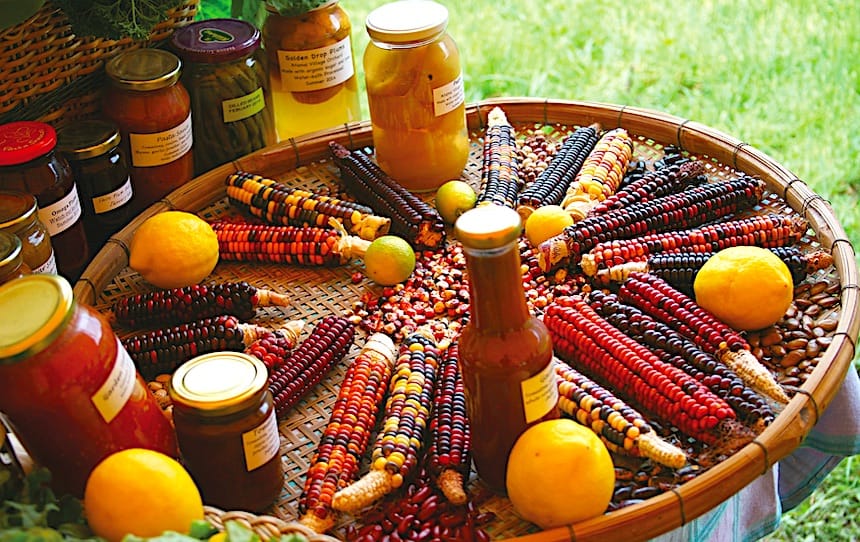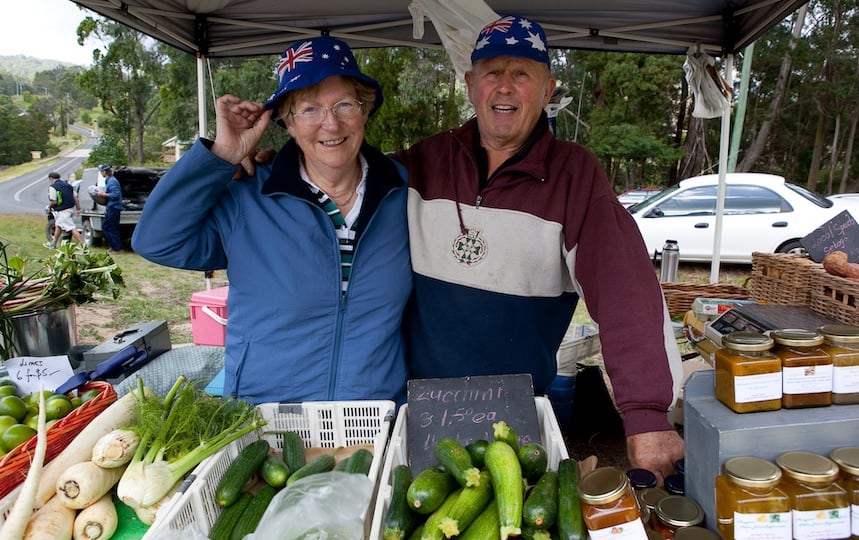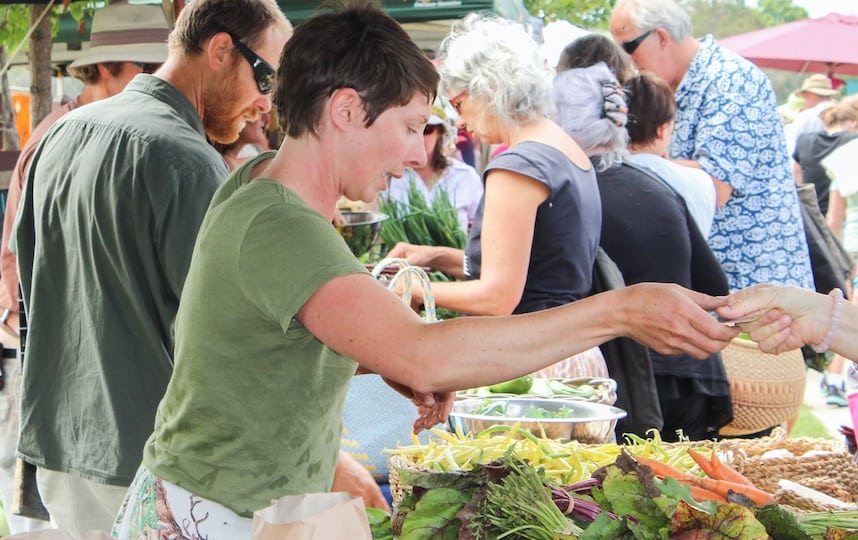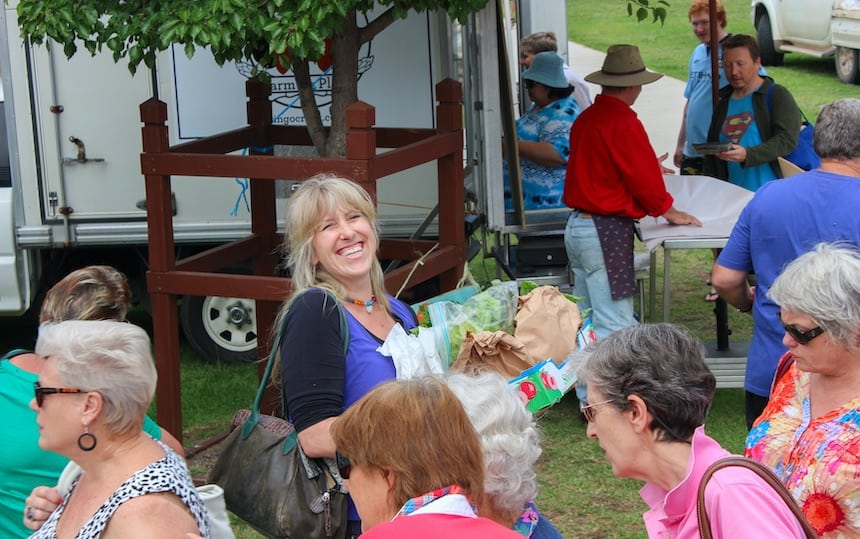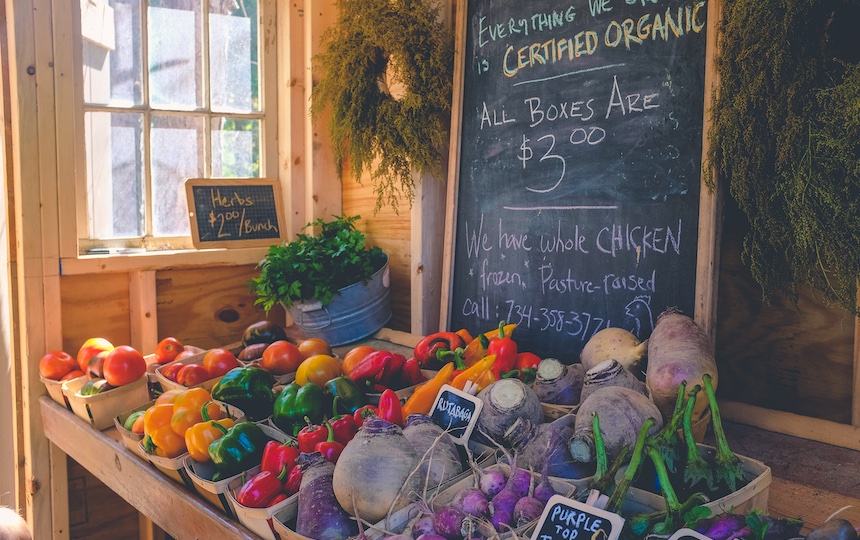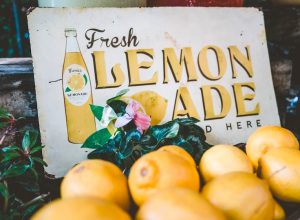A fair food system begins with you. Learn how we can all play our part in a just and fair food system for workers, growers, eaters and the environment.
Here are 10 ways you can help create a fair food system.
1. Learn to cook
This changes everything: you can make what you want, and avoid packaging and food miles.
2. Spend most of your money outside of the big supermarkets
This is a direct snub to the monopolisation of corporate control over the supply chain.
3. Buy directly from a producer
Do you know the producers of what you buy, or does the person you are buying from know them? This is where farmers’ markets come in.
Keep in mind there are real farmers’ markets – full of producers – and then there are markets full of resellers who are just buying from wholesalers; you have to discern which is which.
You can also purchase online, from a farm website or from the Open Food Network, or visit a farm. Direct relationships promote transparency and are key to a fair food system. You could also start a buying group with friends or buy half a cow between several families.
4. Grow your own – and share it
This is the fairest food of all, and while this takes a little effort, growing your own food is a powerful thing. Even an attempt may lead to you growing more, or reignite your desire to be connected to food.
Grow food with your neighbours. A great example is the Food is Free project and the spin-off project in Ballarat.
5. Join a gardening group or volunteer on a community horticulture project
Volunteering provides a fantastic opportunity to learn about gardening and your local area, and builds a sense of community.
Groups like Sustainable Agriculture and Gardening Eurobodalla, SAGE allow you to sign up for a free newsletter. Such simple acts may spark new thoughts about food, and might lead you to participate in a working bee or social event held at a garden. These sorts of organisations should be listed on local councils’ websites.
6. Host a dinner
A person’s consciousness of fair food is raised when food is restored as part of her or his culture.
Having a dinner once a month, with friends, where everyone brings a dish made from local produce, allows people to brag about what they made and where they sourced it from (or what they grew themselves). This creates connections and good food, and generates traditions and memories (culture).
7. Read something about food that’s not in the newspaper – and talk about it
There are great online blogs about alternative food systems. Tell people about what you read. You can be the catalyst to shift the way someone thinks about food, whether it’s to do with their health, seasonality of produce or economic justice for those who are food insecure.
Some sources of good information include the Australian Food Sovereignty Alliance and SAGE’s guide here.
8. Invest in fair food – and divest from corporate food
Increasingly, fair food farmers and enterprises turn to online crowdfunding sites to start or grow their ventures. There are many platforms, such as Start Some Good, who have developed an eBook for food projects.
9. Become part of the food media mafia
If you have research, writing, photography, web development, social media, event, podcast or presenting skills, consider starting a food media project to explore food issues and suggest solutions.
10. Lean on a pollie
Growing your own food is great, but to address systemic problems government policies need to change. Ask your politicians – local, state and federal – what they are doing to address the consolidation of power in the supply chain; how will they promote healthy food environments. and how are they supporting fair food farmers and enterprises?
‘Corporate Food’ has lobbyists – fair food needs people power! Become part of the fair food movement by joining the Australian Food Sovereignty Alliance.
You can find the full version of this article in Issue #5 of Pip Magazine, which is available here.
Like more articles like this one? Subscribe to Pip Magazine’s print or digital editions here.
This list was compiled by Jennifer Richards, Sharon Lee & Kate Raymond for Pip Magazine.

